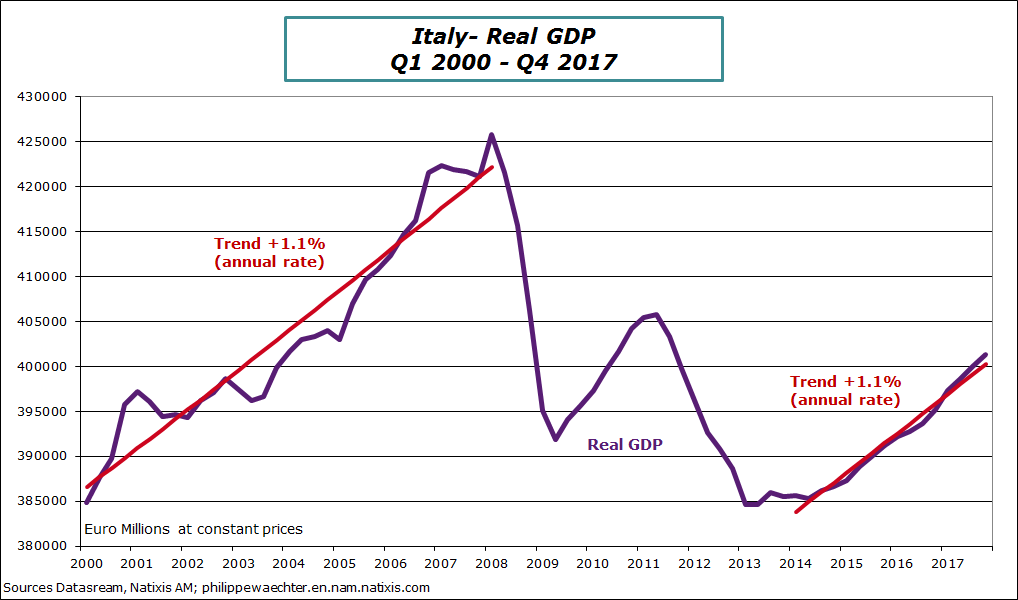Three immediate comments
1 – The outcome is clearly in favor of populism with the 5S movement at 34%, Lega (former Northern League) at 16% and Brothers of Italy at 4%.
2 – Democratic parties that used to govern in the past are out of the picture. Forza Italia (Silvio Berlusconi) was expected to be above Lega. It is below with 14%. The Democrat Party of Matteo Renzi is below 20% at 18%
3 – There is no majority
There is a jump for populist parties and that’s what we must keep in mind. This can be explained by low economic prospects, aging population and the refugees’ crisis. The risk therefore is to try to change institutions and notably the relationships with Europe. We know that some contenders from the 5S movement and for Lega were in favor of an exit from the Euro Area.
What could happen?
The first point to mention is that no party has a majority to govern. It will be a coalition.
It can be with 5S movement and Lega. They share a lot but it would be a very complicated coalition as Lega is mainly represented in the north of Italy and the 5S movement in the south. When we know Italy, we perceive that an immediate agreement will not be reached. But the process in Italy is always very long. Therefore, we have to keep this possibility in mind
The coalition with Lega and Forza Italia is close to 30%. This is not sufficient to have the majority at 40% (direct votes are completed by a proportional vote). The balance of strength would be in favor of Lega and we cannot be sure that Berlusconi could accept this situation. In polls before the elections Forza Italia was ahead of Lega and it was an easier position for Berlusconi to negotiate.
The left is barely around 20% so nothing can be expected on this side.
Negotiations between parties have started yesterday evening and there is at least a month to find an agreement as the President Mattarella will not name a prime minister before the end of March. He will do it between March 30 and April 6.
As there is no clear majority the temptation is to form a technocratic government with an agenda to reform the electoral law to reach political stability. With a government of this type we can expect that the arrival of a populist government could be postponed by 6 to 12 months and no more.
In other words, the Italian GDP is still 15% below its pre-crisis level, the unemployment rate is at 11.1% according to Eurostat in January. Its pre-crisis level was 6.6% (first half of 2008 average). More than that Italy is not able to adjust its economy as it did in the past with a high inflation rate followed by a currency devaluation. So, the question for Italy is to perceive how it can catch up with the Eurozone momentum. Traditional parties have not given a solution and the Italian people bend on populism which is a kind of nonsense as their promises are done without constraints: they could spend more and not depending on Brussels. It cannot be a solution in a country where productivity growth is close to 0% since the beginning of the 2000.
In the short term, the ECB will not change its attitude vis à vis Italy but the question will be asked in case of a populist government that doesn’t trust in European institutions.
The third largest economy of the Euro Area is tempted by a new trajectory and it is a source of concern for every European democrat.

Philippe Waechter's blog My french blog


